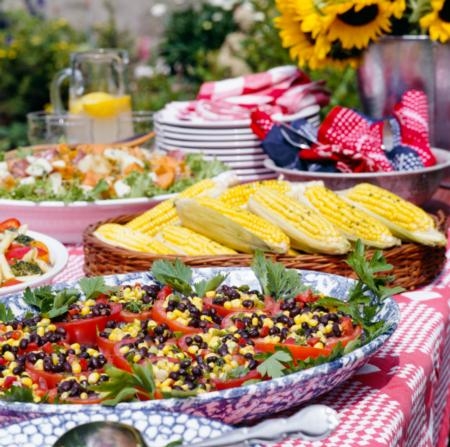Have a happy, healthy July 4 celebration
For as long as I can remember, Independence Day has not been about being alone and independent, the Fourth of July is traditionally spent with family and friends, barbecuing, overeating and watching fireworks. Come to think of it, aren’t all American holidays celebrated with abundant quantities of food? And those mass quantities of food tend to be set out on July 4 and left within easy reach for hours.
It’s a wonder July 5th isn’t national foodborne illness day. According to UC food safety experts, food left at room temperature for two hours can become unsafe to eat. If left out in summer heat above 90 degrees, bacteria get busy and can grow to unsafe levels in food in one hour.
UC Cooperative Extension has a handout online called “The Lunch Box,” which contains tips for making school lunches that don’t deliver foodborne illness. A lot of those tips apply to picnics as well, such as “Keep hot things hot and cold things cold.”
The main foods The Lunch Box recommends be kept cold (40 degrees F or lower) are meat, poultry, fish, eggs, milk, soft cheese and pasta salad, which usually contains mayo. Peeled or cut fruits and vegetables should also be kept cold to deter bacteria growth. Chili, casseroles and refried or baked beans should either be piping hot or chilled. Foodsafety.gov has details for properly preparing, serving and storing various foods.
Brenda Roche Wolford, UC Cooperative Extension advisor in Los Angeles County, specializes in nutrition, family and consumer sciences and pointed me to the Partnership for Food Safety Education website. The partnership recommends four food handling steps to prevent you and your family from suffering foodborne illness and Brenda adds a fifth step:
- Clean
- Cook
- Separate
- Chill
Bonus step: Throw it away
Yes, we must be told explicitly to throw away contaminated food. Most Americans have been told since childhood that we shouldn’t waste food because children in a country that we haven’t visited are starving. I feel the guilt too. Yet, I’d rather chuck suspect food than to be upchucking it later. Those are my words, not Brenda’s. She uses much more professional terms like nausea.
UC ANR has created the “Make it Safe, Keep it Safe” training for employees and volunteers, but it has useful information that anyone can use. The U.S. Food and Drug Administration also has tips for handling food safely when eating outdoors, such as “don’t cross-contaminate.” See the UC Food Safety website for all kinds of food safety information, including publications in Spanish. And if you need some tunes for your party, visit the UC Food Safety Music website to hear “Don’t Get Sicky Wit It,” “Stomachache Tonight,” “We are the Microbes” and many more.
May you have a happy and healthy Independence Day!

